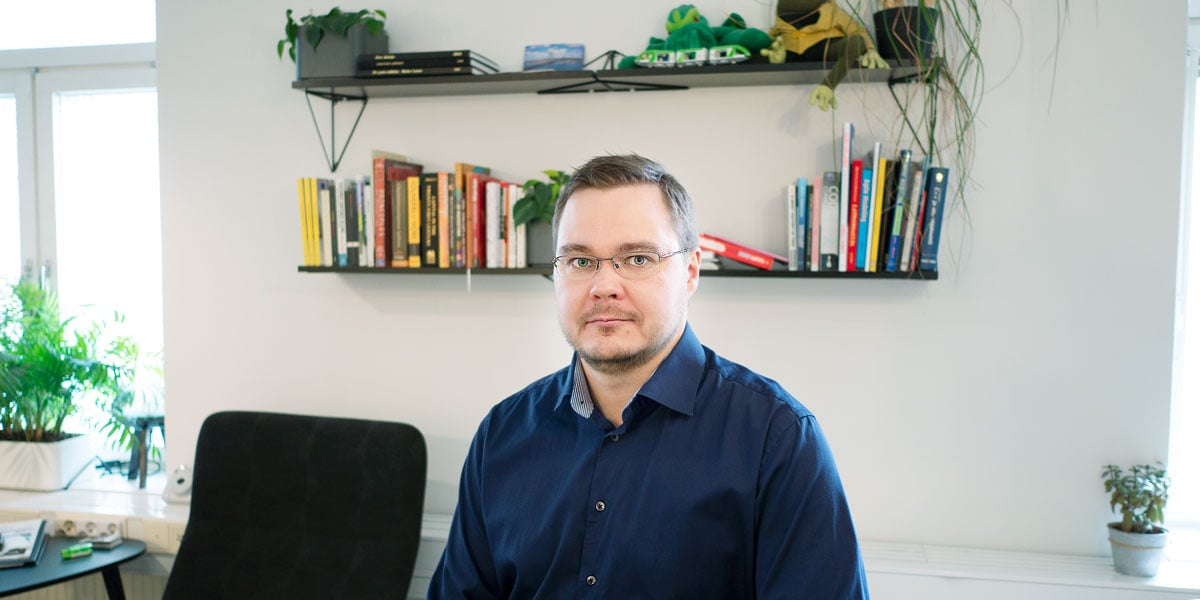Blog
By Cloud1 on Nov 25, 2019 1:30:00 PM
The Main Task of a Data Architect is to Provide Added Value to the End User
Patrick Ståhl has been working as a Data Architect at Cloud1 since August. Data has long been close to his heart, which is why Cloud1 felt like a natural step in his career path.
It's refreshing that Cloud1 has such a clear path. Here, the focus is solely on data, and since Microsoft Azure has been my playing field in the technology sector all along, everything fell into place," Patrick explains.
Patrick's current interests in Azure technologies primarily revolve around the use of Databricks for handling large datasets. Another intriguing area is the utilization of DevOps tools and practices in data projects.
In his previous roles, Patrick has led product development, and he aims to establish standardized practices and expand the use of automation in the data field, similar to what he's experienced in application development.
Getting Business Involved in Data Projects from the Start
Patrick sees Azure's strengths in its rapid development pace, but also in how Microsoft communicates Azure's value to end customers, especially to businesses. It's crucial for business users to understand the full potential of what data can achieve.
Data architects play a significant role in increasing this understanding. Their primary task should always be to consider the added value a solution brings to end users.
When it comes to the current state of data-driven decision-making, many companies still rely on monthly or quarterly Excel reports for planning and decision-making. However, modern technology enables the use of real-time data in planning and decision-making. The challenge often lies in the lack of awareness about these technological possibilities; if you don't know what's possible, you won't know what to ask for.
Indeed, when you introduce predictive models into real-time scenarios, allowing users to experiment with how a change might impact the future and what its probability is, the questions and possibilities become entirely different from dealing with Excel spreadsheets from a month ago. However, it's challenging to grasp the concept if you haven't seen it in action, Patrick reflects.
That's why it's crucial to involve the business from the very beginning of projects. Ideally, the need arises from within the organization, and technology is used to address it. By initially identifying the actual problems of the right business units, you can then search for the right solution options. This way, users continuously gain added value, and the scope of the development grows organically.
Of course, customers nowadays are increasingly informed, and according to Patrick's experience, Cloud1's customers, in particular, have a good understanding of what they want to achieve with data projects and how things should be done.
In general, data transformation is still in its early stages in Finland, and many companies are embarking on their initial implementations.
Taking small steps is the way to move forward, and that's how it should be done, Patrick affirms.

Agile Development Delivers Added Value from the Beginning of the Project
Small steps are also well-suited for agile development, and Patrick considers it an immensely effective approach in development projects.
I enjoy it because it reduces risks and immediately delivers added value.
With the traditional project model, a larger data warehousing implementation might appear as nothing but a cost for the business for a long time. A lot of groundwork is done in the project, and vast amounts of data are collected, but no tangible results are produced.
Sometimes in projects, it may happen that data from various systems is initially gathered into one place. Afterward, it's realized that we actually only need about ten percent of that data in the next year or two. However, the work has already been done, it has been paid for, and the data exists, but it's not being used for anything, nor does it yield any value.
In the agile approach, the focus is initially on addressing a single specific problem and the datasets related to its solution. If everything goes well, under ideal conditions, a visible and value-producing implementation for the end-user organization can be achieved on the same day. Deployment starts right from the first discussions. It's essential that the functional users have questions and interest in the matter from the beginning, and the entire organization learns to use and trust the solutions in use while expanding functionality.
When the development team maintains continuous communication with end-users, immediate feedback and new ideas are gathered. This ensures that the implementation grows in the right direction, following lean principles, rather than pushing potentially unnecessary solutions onto users. An advantage here is that end-users get a useful implementation right away.
The potential risk in agile implementations might be not seeing the big picture. In such cases, implementations may not be consistent and equally maintainable. That's why it's crucial to choose a skilled team that knows what they are doing.
When done correctly, with the right tools and skilled professionals, small pieces come together to form a consistent and functional whole that delivers added value to the organization from the beginning of the development project.
At Cloud1, the Focus is on what Matters most
Patrick has enjoyed his time at Cloud1. He has a supportive and knowledgeable team that is easy to approach for help or to bounce ideas off of. Cloud1 has a flat organizational structure, which means less bureaucracy and allows experts to concentrate on what matters most: helping customers.
A flat organization is important to me. I'm used to solving things directly, and as the CEO sits nearby, things get done quickly. It's also possible to have an impact on many things here, Patrick appreciates.
Do you want to join our team?
As our operations expand, we are constantly looking for new talents. Check out our open job positions and apply.
